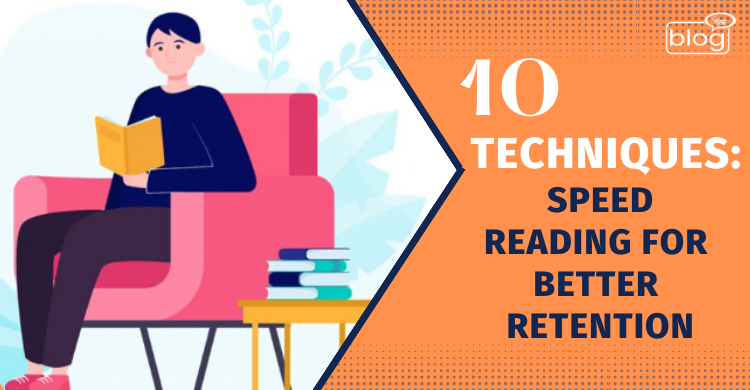In today’s fast-paced world, where we’re bombarded with information, speed reading has become crucial. Mastering this skill can really boost productivity and efficiency. It lets you digest a lot more information in less time, all while understanding it well. Whether one is a student keeping up with schoolwork, a professional managing reports, or just someone who wants to stay informed without spending hours reading, speed reading is invaluable. There are lots of techniques to help read faster and comprehend better. Here are 10 specific techniques that can make a big difference:
- Skimming :
Glancing involves swiftly scanning through the text to capture its main points, focusing on headings, subheadings, and emphasized words. It provides an overview of the content to help you decide on further reading. However, it should complement, not substitute, thorough reading.
- Surveying:
Surveying includes a brief review of the material before diving in, looking at headings, subheadings, and visual aids like charts. This approach helps in understanding the structure and main ideas, aiding in effective information processing during reading sessions.
- Segmenting:
Breaking down the text into smaller segments, called segmenting, makes it easier to understand. Instead of tackling a large chunk of text all at once, one focuses on smaller parts. This approach helps one grasp and remember information more effectively. Using headings and subheadings to organize the text into sections also makes it easier to digest. Taking breaks between these sections further enhances one’s ability to process the content.
- Timing:
Timing entails maintaining a consistent reading speed throughout the material. This can be achieved by using tools like metronomes or setting a word count per minute. It helps sustain focus and avoid unnecessary pauses, ensuring a balanced comprehension rate based on the text’s complexity.
- Filtering:
Filtering involves skipping over non-essential details or redundant information in the text. By focusing only on crucial content, readers can streamline their understanding and save time. Caution is advised to prevent overlooking important information during this process.
- Reversing:
Reversing involves starting from the end of the material and working backward. This technique aids in quickly identifying key points and understanding the overall structure of the text. It is particularly effective for materials with a clear sequence or logical flow.
- Tracing:
Tracing involves using a finger or pen as a guide to help maintain focus and increase reading speed. This technique prevents re-reading and distractions, improving overall reading efficiency. Adjusting the pace of movement according to the text’s complexity ensures the effective use of this method.
- Utilizing Digital Speed-Reading Tools:
Digital speed-reading tools utilize techniques such as highlighting and pacing to enhance reading speed and comprehension. Examples include Spreeder and SwiftRead, which complement traditional reading methods rather than replacing them. These tools are beneficial when used alongside other reading strategies.
- Imagining:
Imagining involves creating mental images or diagrams while reading to aid comprehension and retention. It helps readers grasp complex concepts by connecting different parts of the text visually. Practicing visualization techniques enhances overall understanding and memory recall.
- Resting Eyes:
Taking regular breaks to rest the eyes is crucial for maintaining reading speed and comprehension. This involves closing the eyes briefly or focusing on distant objects to alleviate strain. Adapting the break frequency based on the text’s difficulty promotes sustained focus and improves information processing.
Mastering speed reading helps individuals live smarter and do more in today’s fast-paced world full of information. A key message from this article is the significance of practicing speed reading techniques consistently. Through experimentation with various methods, individuals can identify what works best for them. Improving speed reading isn’t solely about reading faster—it’s about striking a balance between speed and comprehension. With dedication and regular practice, anyone can cultivate these skills to read more swiftly and grasp information more effectively. Embracing speed reading can lead to increased productivity, deeper learning, and success in all aspects of life.
To read more blogs like this, click here.
Writer,
Ashura Tabassum Arshi
Intern, Content Writing Department
YSSE

